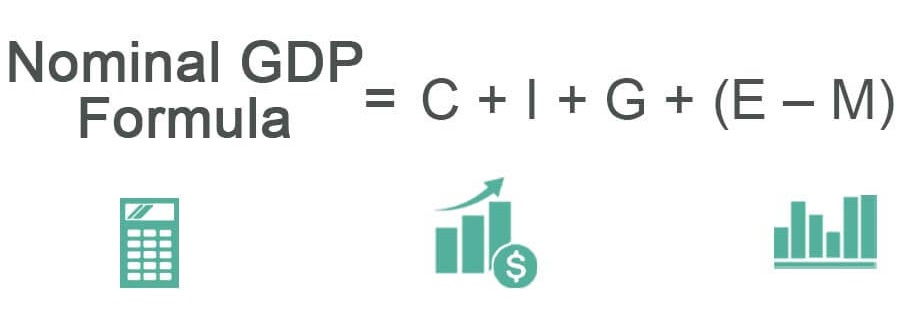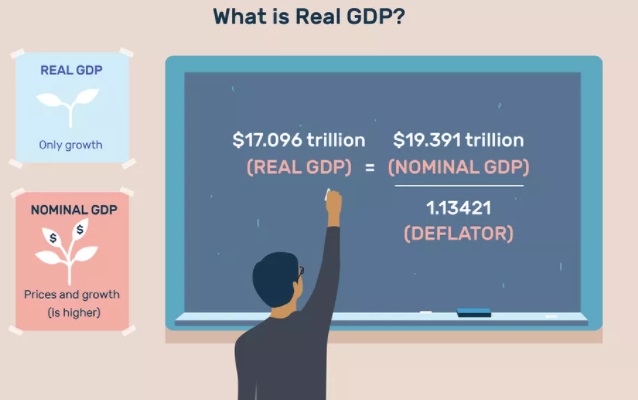You might have come across the term 'GDP' in day to day life through which a nation's economic health is measured, but do you know how it is calculated, what are its types and the differences between them? If no, this article will guide you about GDP, the differences between Real and Nominal GDP and how both of them are calculated.
What is GDP?
Gross Domestic Product (GDP) is the market value of all the goods and services produced by an economy in a given Financial Year. The GDP helps in determining the economic growth, purchasing power and overall economic health of a country.
Types of GDP
GDP is measured from two angles:
1- Nominal GDP
2- Real GDP
Calculation of GDP
GDP = Consumption + Gross Investment + Government Investment and spending + (exports - imports)
Nominal GDP
Nominal Gross Domestic Product is a way of measuring the value of all the goods and services produced by an economy at current market prices in a Financial Year. It is also known as 'Current Dollar GDP' or 'Chained Dollar GDP'.
How is Nominal GDP calculated?
Price changes, money supply, inflation and changing interest rates are taken into account while calculating the Nominal GDP of an economy.
For instance,
(Coffee quantity*current prices of coffee in the market) + (Tea quantity*current prices of tea in the market) + so and so products along with their current market prices = Nominal GDP
Nominal GDP per capita = Nominal GDP / Population of the nation

Real GDP
Real Gross Domestic Product is a way of measuring a nation's output in terms of the value of its good and services, its investments, government spendings and exports with the prices of the base year.
How is Real GDP calculated?
In Real GDP, Nominal GDP is taken into account and is adjusted for inflation or deflation to base year's prices. As a result of this adjustment, the real GDP is a more accurate representation of a nation's economic health.
Real GDP = Nominal GDP / R
Here, R stands for GDP deflator
The GDP deflator is a measurement of inflation since a base year. For example, if in an economy, inflation is 1% since the base year, R or GDP Deflator will be 1.01.
It is to be noted that the GDP deflator or inflation rate for India was 2.3% in the year 2019.

Comparison between Nominal and Real GDP
| Basis | Nominal GDP | Real GDP |
| Meaning | Value of all the goods and services produced by an economy at current market prices. | Value of all the goods and services produced by an economy, its investments, government spendings and exports. |
| GDP Data | The value of the total product is seen to be higher because it does not reduce inflation. | The value of the total product appears low because inflation is reduced in it. |
| Reliability | Less reliable in comparison to Real GDP. | More reliable in comparison to Nominal GDP. |
| Worth | High | Low |
| Uses | Compares different quarters of an FY. | Compares two or more FY. |
| Financial Growth | Analyzing is difficult | Analyzing is easy |
| Size of India's economy | 2.93 trillion dollars (2019) | Rs.1,40,77,586 Lakh Crores (2018-19) |
| India's position in the world | Fifth-largest in the world. | Data Unavailable |
From the above-mentioned analysis, it can be concluded that Real GDP data is more reliable than Nominal GDP as it shows the true picture of an economy and for this reason, it is preferred over Nominal GDP by economists and researchers.
| Do you know? A nation's Nominal GDP is generally higher than that of Real GDP. |
GK Questions and Answers on Gross Domestic Product(GDP) of India
India's GDP growth contracts by 23.9%: Here's everything you need to know
Comments
All Comments (0)
Join the conversation